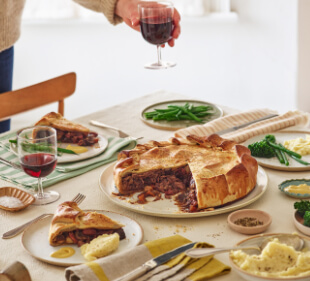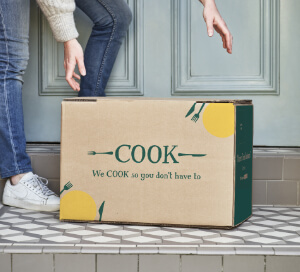Sourcing
Posted on 8 June 2017
Tags: Good business, Good Relationships
Plastic bags, bottles, boxes, and crates ... we have hundreds of products in all shapes and sizes, but what are we doing in the supply chain to improve the transport packaging and deliveries and how do we aspire to be more sustainable with our supply chain partners?
We have always worked on better packaging for our own products that includes focusing on our suppliers and working hard to reduce the transport packaging they use. Some of the work we have done with suppliers over the years has been easier than others, such as removing cardboard from our protein deliveries and using an Returnable Transit Packaging (RTP). These are plastic containers that our suppliers use to deliver our products, which they then collect, clean and reuse for the next delivery.
However, one of the many achievements over the years has been working with one of our suppliers to move away from using polystyrenes boxes. These are widely used in the fish sector for keeping fish at the optimum condition and temperature in transit. It’s horrible stuff! It cannot be recycled at a materials recovery facility so it’s not something that we don’t want our fish arriving in.Working with the suppliers we found that returnable creates wouldn’t keep the fish in the condition we needed, so after lots of trials we agreed on a suitable cardboard box. We now use one that holds the ice and keep the fish cold, whilst still meaning we can bale the cardboard and recycle the transit packaging after we have used the product.What a result!
Other things to help reduce our packaging is pack size.The bigger the pack size the less packaging entering our production. Let’s take chopped tomatoes as an example. We currently use between 300,000-320,000kg of chopped tomatoes per annum. Over the years, we have improved the pack size by moving from 250g cans to 3kg cans to what we currently use now - 20kg bag in box. Both the bag and the box are recyclable, which is great! If we hadn’t have increased the pack size just look at how many of the 250g cases we would still be receiving each week (based on current volumes):
Next steps are to keep assessing all our lines and use the biggest size we can source and accommodate through the production. Why? Well, sticking with the example of the tomatoes above, if we did move to a returnable 200kg drum, we would only be opening 28 drums per week instead of 288 cases.That would save 103kg of cardboard on this line alone each week.
Recent Posts
- Elf Help
- Great Taste Awards 2025
- From Field to Fork: How More Nature-Friendly Beef Made It Into Our Lasagne
- Our Autumn Menu is here!
- Less & Better Meat
Archives
- December 2025
- October 2025
- September 2025
- August 2025
- July 2025
- June 2025
- May 2025
- April 2025
- March 2025
- February 2025
- January 2025
- 2024
- 2023
- 2022
- 2021
- 2020
- 2019
- 2018
- 2017
- 2016
- 2015
- 2014
- 2013
- 2012
- 2011
- 2010
- 2009
- 2008
















